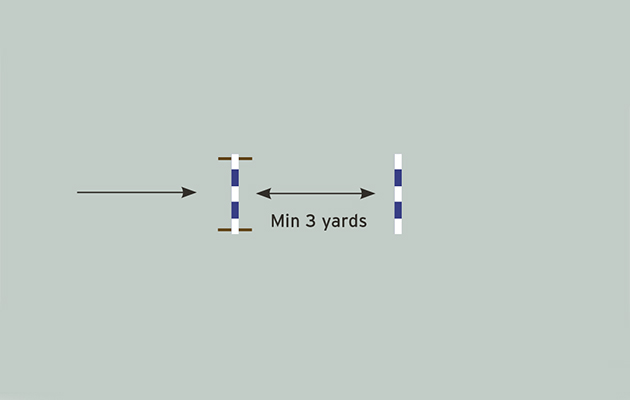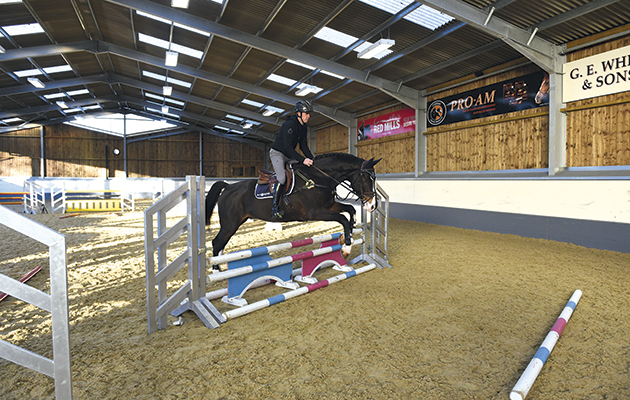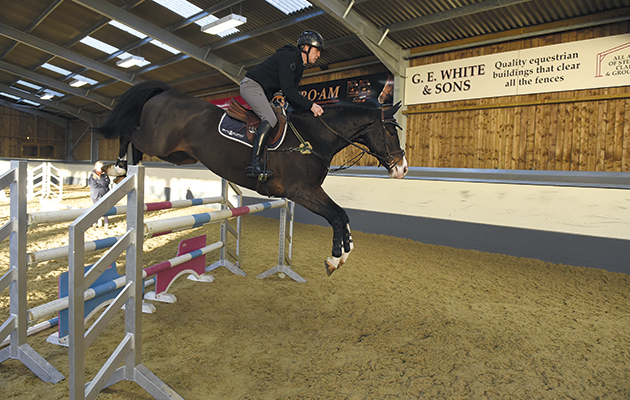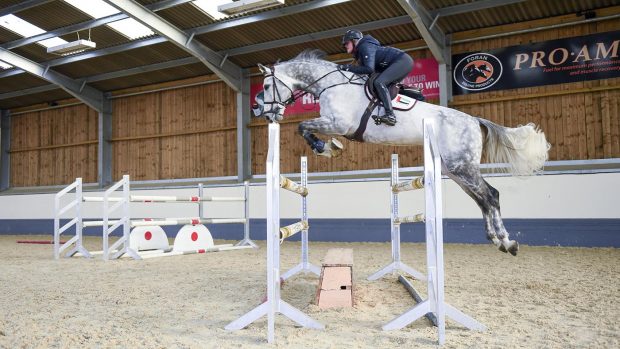The Irish showjumper takes us through a step-by-step guide to an exercise designed to get the most out of your horse's jump below
The aim
- This is Shane’s key exercise for improving a horse’s jump. “It’s an unbelievably simple exercise that does a multitude of things,” he says.
- Putting a pole behind the fence makes a horse look, makes him think and makes him lower his head and neck.
- This has two main effects: it stops the horse from rushing and it teaches him to make a better shape over the fence.
- “You can see with this horse that three or four strides out he starts to run the distance sometimes,” says Shane. “You can see he’s getting going three or four strides out but the last two strides, because he knows there’s a pole, he backs off with out me having to do anything.”
- Because the horse lowers his head and neck as he looks at the fence, he then jumps with his hips higher, beginning to open up behind.
- It’s an exercise that Shane uses for horses at all levels.
- “I’ll use this exercise at an away show — if they’ve had two days of jump off classes and I need to slow them down for a grand prix. You only need to jump it at 1m10, even if they’ll be jumping 1.60m. It helps them get it in their head that they need to wait again.”
Step-by-step

- Start with a small vertical with the pole a minimum of three yards behind the fence.
- After the first jump, you should find the horse starts to look and lengthen his neck, as he knows there is something behind the fence at the back.

- The horse’s jump should start to improve as his shape over the fence changes, getting his hips higher and opening up behind.
- Raise the vertical by increments up to 1.20m or 1.25m. Move the pole out to four yards to accommodate a bigger fence and to make sure the horse doesn’t scare himself.
- Switch to an oxer and repeat (for an oxer the pole should be a minimum of six yards away).

Pitfalls
- In this exercise, you don’t want to get deep to the fence. If you’re having a “blind day” over hitting your spot, Shane recommends putting a placing pole three yards in front of the fence, and another pole seven yards away “it will fix your approach and the jump will still be good,” he says.
- If you’re doing it the first time, make sure you give them enough space for the pole. “This fella [Foudre F] is quite scopey, so I’ve had to use a distance of 3 1/2 yards at 1.10and four yards at 1.20m,” he says.
- This exercise can be difficult to use at a show in a busy warm up. “Come down earlier to do it, so you’re not interfering with anyone else,” notes Shane.
- If you’re doing this exercise for the first time with a very green horse, you can use a foam pole behind the fence to avoid the risk of them standing on it. “The only problem with foam poles is that they can start kicking them about the place,” says Shane. “You don’t want to teach them to kick the poles!”
This exercise was part of our training series with Shane Breen, first published in the 15 December 2016 issue of Horse & Hound magazine






























